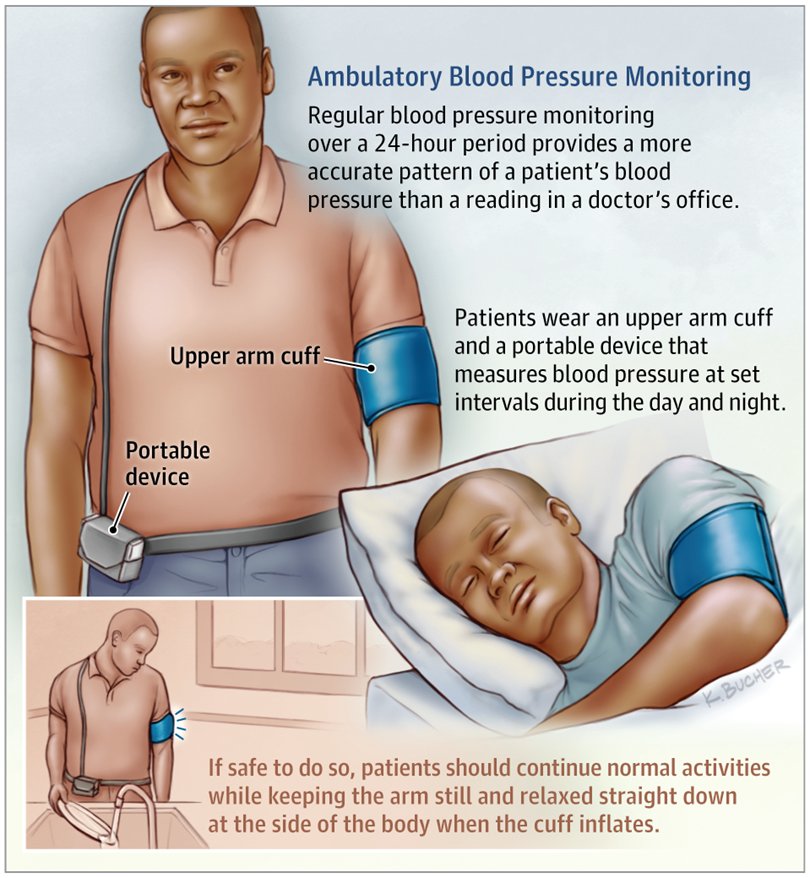AMBULATORY BP MONITOR
ambulatory blood pressure monitoring is a method to measure blood pressure on a continuous basis. Your BP is measured even as you sleep. The ongoing data helps your doctor get a more accurate picture of your blood pressure numbers.

Why is 24-hour ambulatory blood pressure monitoring used?
Ambulatory BP monitoring provides additional information about how changes in your BP may correlate with your daily activities and sleep patterns. Guidelines for blood pressure management from the American Heart Association and American College of Cardiology now strongly recommend confirming a diagnosis of hypertension with ambulatory BP monitoring.
For most people systolic BP decreases about 10% to 20% during sleep. However, for some people BP might not drop during sleep. It may even rise.
Ambulatory BP monitoring can detect abnormal changes in BP that might go unnoticed when it’s only measured in the doctor’s office. It’s a useful way to detect white coat hypertension, masked hypertension, and sustained hypertension.
Ambulatory BP monitoring may also be suitable in other situations, such as for:
- Pregnant women with hypertension.
- People with “borderline” hypertension.
- Difficulty controlling BP with medication.
- BP changes due to other drugs.
- Changes in prescription medications that may impact BP.
- Fainting episodes or hypotension (low BP).
What are disadvantages of 24-hour blood pressure monitoring?
You may experience some discomfort due to 24-hour BP monitoring. Pressure due to repeated inflation of the cuff can cause soreness in your upper arm. BP readings during the night may interfere with your sleep. The cuff may also irritate the skin and cause a mild rash on the arm that usually goes away on its own. Some insurance carriers do not reimburse patients for using the ambulatory devices, unless white coat hypertension or masked hypertension is suspected.
